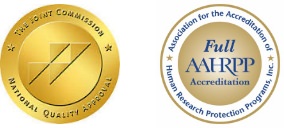|
21 ELECTROTHERAPY (Low & Medium Frequency ) |
200 HOURS |
||
| Introductory Physics | |||
| Electricity | |||
| Static Electricity | |||
| Current Electricity | |||
| Magnetism | |||
| Moving coil milliammeter | |||
| Voltmeter | |||
| Transformer | |||
| Chokes | |||
| Electric valves or thermionic valves | |||
| Metal valve rectifiers | |||
| Ionisation | |||
|
Low – Frequency |
|||
| Interrupted galvanic current | |||
| Effects of interrupted galvanic current on innervated and denervated muscles | |||
| Characteristics of stimulating current | |||
| Threshold of stimulation | |||
| Physiological effects of IG current, chemical and therapeutic effects | |||
| Electro diagnostic tests | |||
| Characteristics of normal and denervated muscle | |||
| Peripheral nerve lesions | |||
| Selection of current | |||
|
22. ELECTROTHERAPY (HIGH FREQUENCY) |
150 HOURS | ||
| Define electricity | |||
| Magnetism | |||
| Define electromagnetic induction | |||
| Condensers | |||
| Valves | |||
| Rectifiers | |||
| Fuse and grid | |||
| Discuss the various devices used in regulating intensity of current. | |||
| Define oscillation | |||
| Radiant energy | |||
| Electro magnetic waves and its properties | |||
| Physiological and therapeutic effects of high frequency currents | |||
|
Short Wave diathermy |
|||
| Actinotherapy | |||
| Infrared radiation | |||
| Microwave diathermy | |||
| Paraffin wax and moist heat | |||
| Ultrasonic therapy | |||
| Cryotherapy | |||
| Interferential therapy | |||
| TENS | |||
| LASER | |||
| Ultra violet radiation | |||
| 23. CLINICAL ORTHOPAEDICS |
125 HOURS |
||
| Introduction to orthopaedics | |||
| Principles of operative treatment | |||
| Sprains and muscle strains | |||
| Fractures and dislocations | |||
| Upper limb fractures and dislocations | |||
| Lower limb fractures and dislocation | |||
| Spinal fractures and dislocations | |||
| Recurrent dislocations | |||
| Amputations | |||
| Bone & joint infections | |||
| Bone joint tumors | |||
| Chronic arthritis | |||
| Low back ache painful arc syndrome , tendonitis facitis & spasmoidic torticollis | |||
| Spinal deformities | |||
| Poliomyelitis | |||
| Congenital deformities | |||
| Peripheral nerve injuries | |||
| Hand injuries | |||
| Leprosy | |||
| Basic knowledge of implants | |||
| Sports injuries and its management | |||
|
24. PHYSIOTHERAPY IN ORTHOPAEDIC CONDITIONS |
110 HOURS | ||
| define fracture, review the types signs and symptoms | |||
| describe the PT assessment of a patient with a fracture during the immobilization | |||
| list the aims of PT management in a patient with a fracture | |||
| Review manual mechanical, skin, skeletal, lumbar and cervical traction | |||
| Describe the methods of mobilization of a patient/extremity after healing of a fracture | |||
| review the mechanism of injury, clinical features, treatment and complications and describe the PT management and Home program | |||
| describe briefly the general and PT assessment of the vertebral column | |||
| review cervical and lumbar spondylosis, spondylolysthesis, TB spine and spinal fracture outline PT assessment and management | |||
| List the common postural abnormalities affecting the spine. | |||
| Review the clinical features and describe the PT management of Ankylosing spondylitis | |||
| Intervertebral Disc prolapse | |||
| Define the soft tissue injuries, review their etiology and clinical features and describe their treatment | |||
| Review upper and lower limb and spinal orthosis and prosthesis. | |||
| Review the indications and principles of amputations of the upper and lower limb describe PT management | |||
| Define poliomyelitis and review PT management | |||
| cerebral palsy, | |||
| Rheumoatiod Arthritis | |||
| Osteoarthrits | |||
| leprosy | |||
| different degrees of burns, PT assessment and management | |||
| 25. COMMUNITY MEDICINE |
150 HOURS |
||
| Outline the natural history of diseases | |||
| Outline the various measures of prevention and methods of intervention especially for diseases with disability | |||
| Outline the national care delivery system | |||
| Outline selected national health programmes | |||
| Define occupational health and list methods of prevention of occupational diseases | |||
| Outline of the employees state insurance scheme and its benefits | |||
| Describe the social security measures for protection from occupational hazards, accidents, diseases and workman’s compensation act | |||
| Outline the objectives and strategies of the national Family Welfare Programme | |||
| Define community based and institution based rehabilitation. Describe its advantage and disadvantages. | |||
| Describe the communicable diseases | |||
| Describe the Epidemiology of Rheumatic heart disease cancer, chronic degenerative disease and cerebrovascular accidents | |||
| Outline the influence of nutritional factors such as protein Energy Malnutrition, Anaemia, Vitamin deficiency and minerals on disability | |||
| Health education: Its principles, methods of communication, role in rehabilitative services | |||
| Define the role of community leaders and health professionals in health educationOutline the role of international health agencies in rehabilitation of the disabled. |

Home3rd Year


